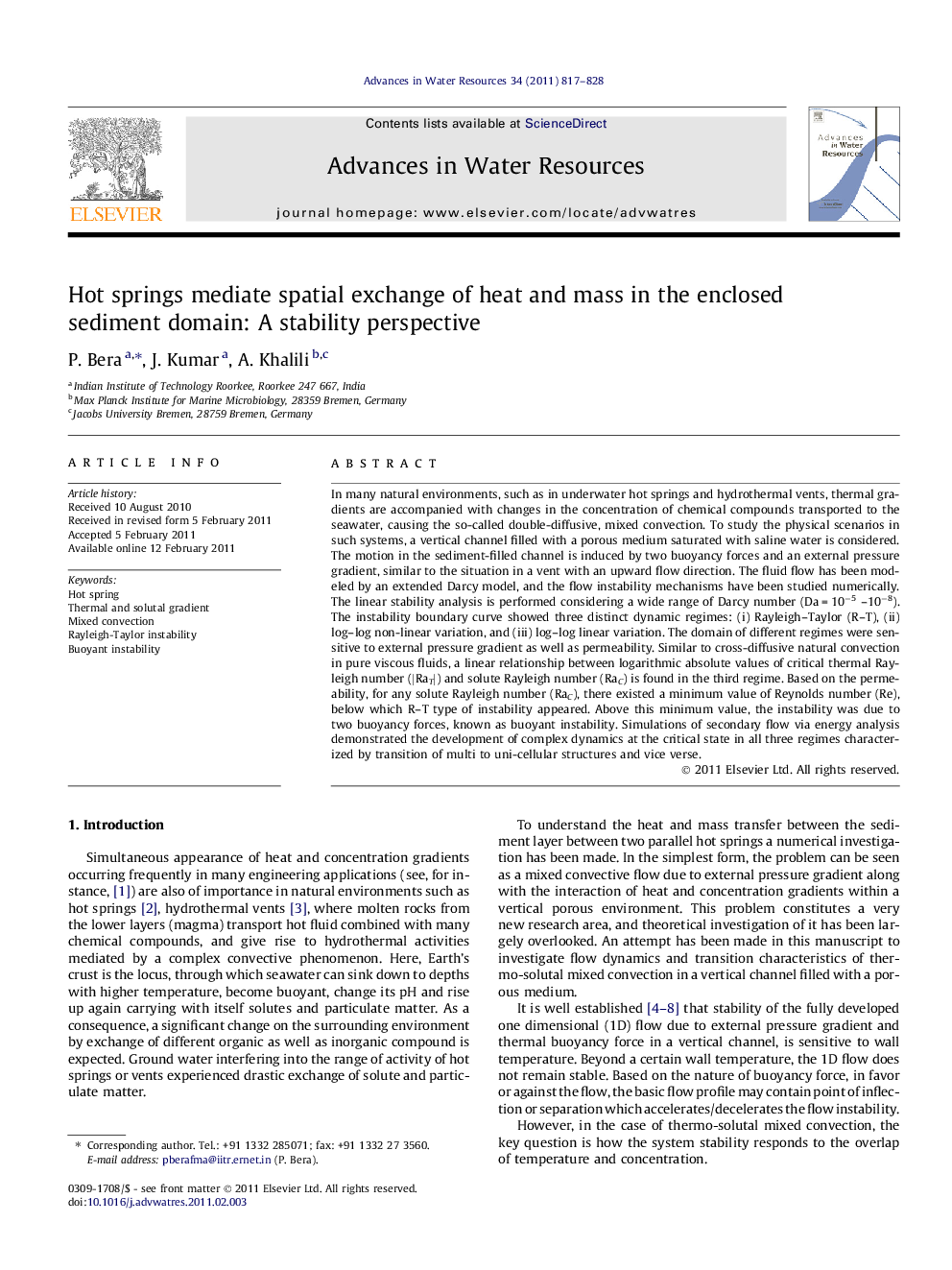| کد مقاله | کد نشریه | سال انتشار | مقاله انگلیسی | نسخه تمام متن |
|---|---|---|---|---|
| 4526101 | 1323814 | 2011 | 12 صفحه PDF | دانلود رایگان |

In many natural environments, such as in underwater hot springs and hydrothermal vents, thermal gradients are accompanied with changes in the concentration of chemical compounds transported to the seawater, causing the so-called double-diffusive, mixed convection. To study the physical scenarios in such systems, a vertical channel filled with a porous medium saturated with saline water is considered. The motion in the sediment-filled channel is induced by two buoyancy forces and an external pressure gradient, similar to the situation in a vent with an upward flow direction. The fluid flow has been modeled by an extended Darcy model, and the flow instability mechanisms have been studied numerically. The linear stability analysis is performed considering a wide range of Darcy number (Da = 10−5 –10−8). The instability boundary curve showed three distinct dynamic regimes: (i) Rayleigh–Taylor (R–T), (ii) log–log non-linear variation, and (iii) log–log linear variation. The domain of different regimes were sensitive to external pressure gradient as well as permeability. Similar to cross-diffusive natural convection in pure viscous fluids, a linear relationship between logarithmic absolute values of critical thermal Rayleigh number (∣RaT∣) and solute Rayleigh number (RaC) is found in the third regime. Based on the permeability, for any solute Rayleigh number (RaC), there existed a minimum value of Reynolds number (Re), below which R–T type of instability appeared. Above this minimum value, the instability was due to two buoyancy forces, known as buoyant instability. Simulations of secondary flow via energy analysis demonstrated the development of complex dynamics at the critical state in all three regimes characterized by transition of multi to uni-cellular structures and vice verse.
Research highlights
► We model upward migration of hot spring water within the saturated porous sediment.
► We investigate, via linear stability analysis, the existence of three dynamical regimes.
► Simulations of secondary flow via energy analysis is made at critical state.
► Combined effect of heat and solute results at least, in 2D exchange of dissolved matter.
► The concept of unidirectional hot spring/vent flow breaks down.
Journal: Advances in Water Resources - Volume 34, Issue 7, July 2011, Pages 817–828